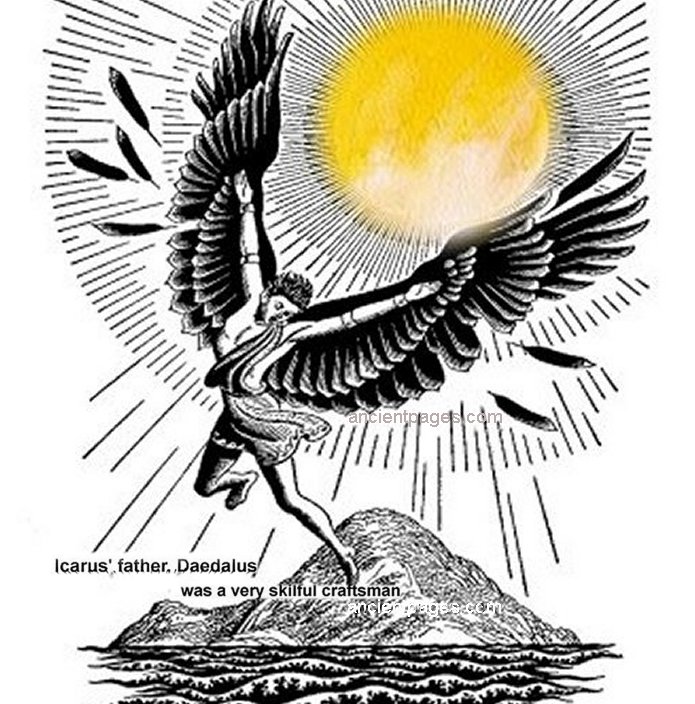Ancient High-Technology: Automatons In Greek Mythology
A. Sutherland - AncientPages.com - It cannot be denied that the concept of automation was known to the ancient Greeks. There is a good reason to believe that these ancient people had the skills to design self-operating machines but today we know about them only from mythical stories related to Hephaestus and a few others.
The world's first metallurgist and a master engineer, according to Greek mythology, was the blacksmith of the Olympian Gods, Hephaestus (or Vulcan, his Roman counterpart).
In Greek mythology, we come across detailed descriptions of devices created by Hephaestus and Talos was not the only creation of the master. Hephaestus produced golden walking statues which resembled young living women to serve him. They had their own voices, strength and helped him to walk.
The divine smith also created the Celedones (automotones or automata) - animate, golden statues that could sing. They became known as the magical singers standing at the Temple of the God Apollo at Delphi.
The automatons had the shape of either beautiful women, wryneck birds, or a combination of the two--sirens-like bird-women. Other interesting inventions of Hephaestus were the four bronze horse-shaped automotones that were used to draw the chariot of his two sons, the Kabeiroi.
Hephaistos made these machines by breathing defiant fire between their teeth, like the pair of brazen footed bulls which he made for Aietes the redoubtable ruler of the Kolkhians, with hot collars and burning pole. Eurymedon [one of the Kabeiroi] drove and guided the fiery mouths of the iron foot steeds with a fiery bridle" wrote Nonnus, a Greek poet in an epic tale of the god Dionysus.'
In Iliad, Homer writes about the Golden Tripods of Olympus: "[Hephaistos] was sweating as he turned here and there to his bellows busily, since he was working on twenty tripods which were to stand against the wall of his strong-founded dwelling. And he had set golden wheels underneath the base of each one so that of their own motion they could wheel into the immortal gathering, and return to his house: a wonder to look at. These were so far finished, but the elaborate ear handles were not yet on. He was forging these, and beating the chains out."
From Greek mythology, we also learn about a mechanical device known as the Kaukasian Eagle that was set by Zeus to feed on the ever-regenerating liver of the Titan Prometheus, after he was chained to the peak of Mount Kaukasos as punishment for stealing fire from the gods.
The eagle was described as a bronze automaton also constructed by Hephaestus.
The Olympian Gods used a set of twenty-wheeled tripods crafted by Hephaistos out of gold. They were automatic and wheeled themselves in and out of the halls of the gods as they were required.
In his epic poem Argonautica, Apollonius Rhodius says that when Hephaestus decided to give Aeetes, King of Kolkhis a present, he constructed a pair of fire-breathing bull-shaped automatons forged out bronze.
"He [Hephaistos] had also made him [Aeetes king of Kolkhis] Bulls with feet of bronze and bronze mouths from which the breath came out in flame, blazing and terrible. And he had forged a plow of indurated steel, all in one piece."
All as a thank-offering to Helios, who had taken him up in his chariot when he sank exhausted on the battlefield of Phlegra..."
Icarus' father, Daedalus was a skilled craftsman and he was also familiar with the ancient secrets of robotics. It is said he could create images that "moved about". Were these images in fact one of the first attempts to create an early form of television?
According to Plato, the Greek philosopher, Daedalus constructed human-like figures which moved on their own! Plato states that these robots were so active that they had to be prevented from running away.
From Garcilaso de la Vega (1501-1536), a Spanish soldier we learn that the Incas had a special statue in the Valley of Rimac "which spoke and gave answers to questions like the oracle of the Delphic Apollo."
Was Garcilaso de la Vega describing a computer?
The best way to prove the existence of ancient robots and computers is of course to present physical evidence rather than rely on myths, legends, and ancient scripts. We must not forget it is estimated that our planet has suffered at least five major catastrophes which caused the extinction of more than 50% of all species. Civilizations that existed prior to our own perished in violent cataclysms. If there are any surviving physical objects, then they are most likely buried deep in the oceans. How can we find them when most of our oceans are still unexplored?
Former civilizations possessed many scientific notions that we have today, including the concept of robotics and computer technology.
Written by – A. Sutherland - AncientPages.com Senior Staff Writer
Copyright © AncientPages.com All rights reserved. This material may not be published, broadcast, rewritten or redistributed in whole or part without the express written permission of AncientPages.com
Expand for referencesReferences:
More From Ancient Pages
-
 Rohonczi Codex Still Undeciphered – Is It The Most Secret Book Written In A Code?
Artifacts | May 30, 2014
Rohonczi Codex Still Undeciphered – Is It The Most Secret Book Written In A Code?
Artifacts | May 30, 2014 -
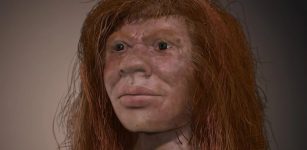 Mysterious Denny – 90,000-Year-Old Child Whose Parents Were Two Different Human Species
Featured Stories | Jul 25, 2023
Mysterious Denny – 90,000-Year-Old Child Whose Parents Were Two Different Human Species
Featured Stories | Jul 25, 2023 -
 On This Day In History: Gerardus Mercator Famous Mapmaker Of All Time Died – On Dec 2, 1594
News | Dec 2, 2016
On This Day In History: Gerardus Mercator Famous Mapmaker Of All Time Died – On Dec 2, 1594
News | Dec 2, 2016 -
 Never-Before-Seen Amazon Rock Art Reveal People Lived With Giant Ice Age Animals
Archaeology | Dec 5, 2020
Never-Before-Seen Amazon Rock Art Reveal People Lived With Giant Ice Age Animals
Archaeology | Dec 5, 2020 -
 Chinese Invention: World’s First Known Movable Type Printing
Ancient History Facts | Dec 30, 2014
Chinese Invention: World’s First Known Movable Type Printing
Ancient History Facts | Dec 30, 2014 -
 Earliest Period Of Warfare In Europe Occurred Over 1,000 Years Earlier Than We Thought
Archaeology | Nov 3, 2023
Earliest Period Of Warfare In Europe Occurred Over 1,000 Years Earlier Than We Thought
Archaeology | Nov 3, 2023 -
 Giant Balor Of The Evil Eye – Terrifying Fomorian King And Grandfather Of Celtic God Lugh
Celtic Mythology | Apr 30, 2018
Giant Balor Of The Evil Eye – Terrifying Fomorian King And Grandfather Of Celtic God Lugh
Celtic Mythology | Apr 30, 2018 -
 Mystery Of The Ancient Red Sign Witnessed In The Sky Over Japan
News | Mar 31, 2020
Mystery Of The Ancient Red Sign Witnessed In The Sky Over Japan
News | Mar 31, 2020 -
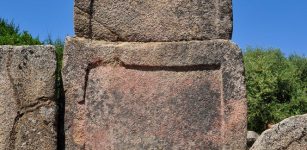 Mystery Of The Giants’ Grave of Coddu Vecchiu
Featured Stories | Jun 27, 2015
Mystery Of The Giants’ Grave of Coddu Vecchiu
Featured Stories | Jun 27, 2015 -
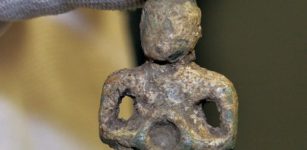 Rare 2000-Year-Old Celtic Figurine Among Finds In Cambridgeshire
Archaeology | Dec 18, 2018
Rare 2000-Year-Old Celtic Figurine Among Finds In Cambridgeshire
Archaeology | Dec 18, 2018 -
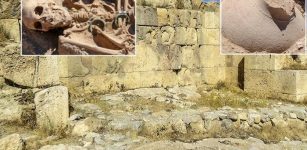 Urartian Noble Woman Buried With Jewelry Found In 2,750-Year-Old Necropolis Of Çavuştepe Castle
Archaeology | Sep 10, 2020
Urartian Noble Woman Buried With Jewelry Found In 2,750-Year-Old Necropolis Of Çavuştepe Castle
Archaeology | Sep 10, 2020 -
 Chankillo: A 2300-Year-Old Solar Observatory in Peru
Civilizations | Sep 2, 2015
Chankillo: A 2300-Year-Old Solar Observatory in Peru
Civilizations | Sep 2, 2015 -
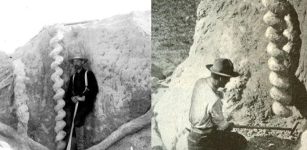 ‘Devil’s Corkscrews’: Extraordinary Giant Spirals Of Nebraska Rocky Mountains
Featured Stories | Apr 23, 2023
‘Devil’s Corkscrews’: Extraordinary Giant Spirals Of Nebraska Rocky Mountains
Featured Stories | Apr 23, 2023 -
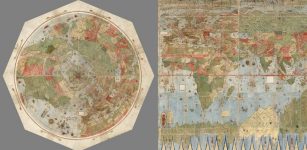 Unique Ancient Map Depicting The Earth As Seen From Space Restored Digitally
Archaeology | Dec 18, 2017
Unique Ancient Map Depicting The Earth As Seen From Space Restored Digitally
Archaeology | Dec 18, 2017 -
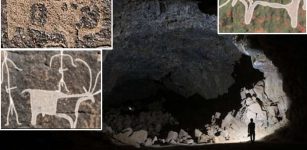 Human Occupation In Lava Tube Cave In Saudi Arabia – First Evidence Discovered
Archaeology | Apr 18, 2024
Human Occupation In Lava Tube Cave In Saudi Arabia – First Evidence Discovered
Archaeology | Apr 18, 2024 -
 Exceptional Precision And Technical Mastery Of Iberian Archery From 7,000 Years Ago
Archaeology | Dec 27, 2024
Exceptional Precision And Technical Mastery Of Iberian Archery From 7,000 Years Ago
Archaeology | Dec 27, 2024 -
 Code Of Chivalry: ‘Knightly’ Behavior, Courageous Medieval Knights, Warriors And Superior Men
Featured Stories | Jun 5, 2016
Code Of Chivalry: ‘Knightly’ Behavior, Courageous Medieval Knights, Warriors And Superior Men
Featured Stories | Jun 5, 2016 -
 Radiocarbon Dating Sheds Light On Historical Events In The Ancient City Of Gezer
Archaeology | Nov 15, 2023
Radiocarbon Dating Sheds Light On Historical Events In The Ancient City Of Gezer
Archaeology | Nov 15, 2023 -
 Can You Help Identifying This Strange Bamboo Cart Found In A Melted Glacial Path In Switzerland?
Archaeology | Nov 6, 2024
Can You Help Identifying This Strange Bamboo Cart Found In A Melted Glacial Path In Switzerland?
Archaeology | Nov 6, 2024 -
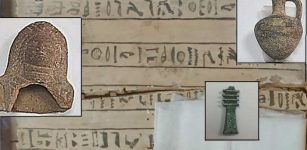 Smuggled Ancient Egyptian Artefacts Finally Arrive Home From Italy
Archaeology | May 16, 2023
Smuggled Ancient Egyptian Artefacts Finally Arrive Home From Italy
Archaeology | May 16, 2023


